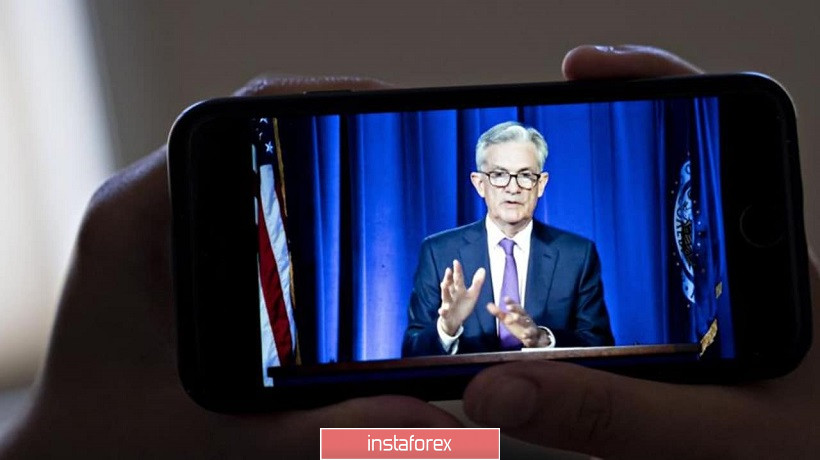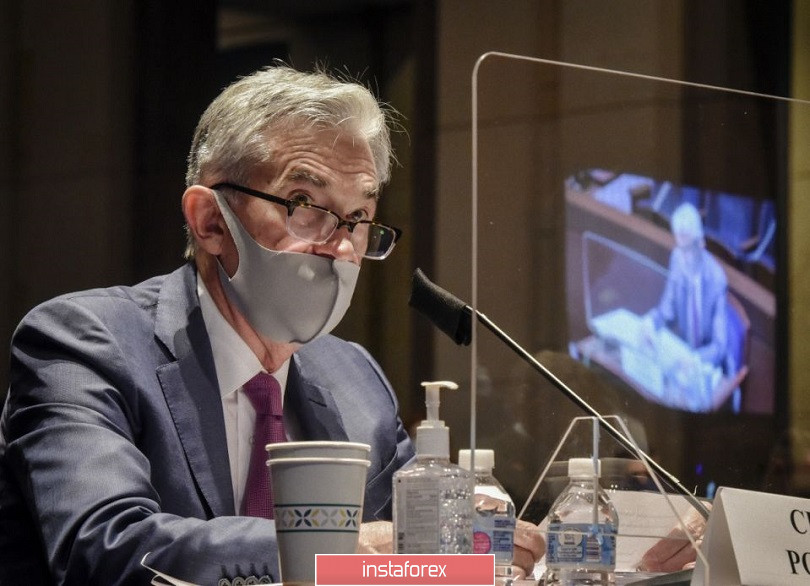Climb, fall, correction: this is how one can describe the market reaction to the long-awaited testimony by the Fed's Chair Jerome Powell. By and large, other dollar-related currency pairs responded in a similar way, following the dollar index. After a short-term (but rather powerful) plunge, the US currency began to pick up steam across the board reflecting the growing demand. Then the situation leveled off so that the greenback is holding the upper hand only in some dollar-related currency pairs. What is the reason for such contradictory price gyration?
Let me remind you that today the Fed's Chairman opened a three-day economic symposium in the American city of Jackson Hole. Traditionally, the event was held in offline, but the coronavirus pandemic has made its own adjustments: market participants are watching the online version of the annual forum. So, Jerome Powell made a video broadcast today. Other governors of central banks are also due to speak. In particular, the governors of the Bank of Canada, the Bank of England, the ECB President, and the Governor of the Bank of Japan are taking part in the symposium.

During his speech, the Fed's leader spoke about the revision of the strategy. It was a widely promoted and widely anticipated event. However, there was no consensus among market participants on the forward guidance of monetary policy. Most experts assumed that the Fed would resort to a new strategy for targeting average inflation. In this part, their predictions came true. As part of the new strategy, the central bank will allow inflation to exceed the 2% target to offset periods of slow consumer inflation. In other words, the Fed will try to offset long periods of low inflation with periods of higher price growth. The only question was how high the Fed would allow inflation to climb. Analysts suggested various scenarios, including the worst for the dollar. For example, some experts admitted that the regulator would "tolerate" 3% inflation while keeping rates low.
But the reality was not so harsh. Jerome Powell, with his usual diplomacy, did not indicate specific inflationary barriers. Besides, he did not speak about the 3% level. And yet he noted that any inflation overshooting the target "would be moderate." Jerome Powell also stressed that the regulator "will act without hesitation" if inflation rises above the target levels. In other words, he didn't raise the target level (or even set any specific targets), allowing only the "favor" of the central bank to ensure that inflation exceeds the standard target of 2% before the regulator raises interest rates.
Importantly, even bearing in mind cautious and diplomatic wording, the Fed's Chairman spoke with very "dovish" rhetoric. In fact, he pushed back the hypothetical date of the rate hike to a more distant future, stating that the regulator would allow the inflation rate to surpass the target (which still needs to be achieved). But the fact is that ahead of today's speech, the market had been on edge foreseeing the implementation of more pessimistic scenarios. Fortunately, these scenarios did not come true, so the US dollar strengthened against the basket of major currencies.
Yesterday Reuters published the views of currency strategists. Some of them said the Fed chief could cement his promise to keep interest rates at record lows. According to their assumptions, the regulator could postpone the rate hike until unemployment falls below a certain level. Besides, the recovery of the US labor market is stalling. Weekly updates on initial unemployment claims prove this idea. Therefore, such assumptions of experts yesterday exerted significant pressure on the greenback.
However, today Jerome Powell denied these rumors. Mr. Powell said it makes no sense to set targets for the unemployment rate, since this indicator "changes regardless of monetary policy."
Thus, elevated market expectations let the buyers of EUR/USD down. In my opinion, the initial market reaction was completely justified: de facto, the Fed is softening its policy and postponing the term of the rate hike. There was no good news for the dollar today. But as soon as traders saw that the most pessimistic forecast scenarios did not come true, the flywheel began to spin in the opposite direction. In fact, this is a temporary, reflexive reaction of the market. The US dollar failed to regain bullish momentum as the "aftertaste" of today's speech by Powell is clearly not in favor of the American currency.
Therefore, long positions on EUR/USD are still a priority. The bears could not even break through the support level of 1.1720 (the lower line of the Bollinger Bands indicator on the daily chart). So, the price naturally rolled back to the middle of the price range 1.1720-1.1860. Long deals can be considered either from the current levels or from lower levels if sellers try again to test the lower end of the above range.
 English
English 
 Русский
Русский Bahasa Indonesia
Bahasa Indonesia Bahasa Malay
Bahasa Malay ไทย
ไทย Español
Español Deutsch
Deutsch Български
Български Français
Français Tiếng Việt
Tiếng Việt 中文
中文 বাংলা
বাংলা हिन्दी
हिन्दी Čeština
Čeština Українська
Українська Română
Română

